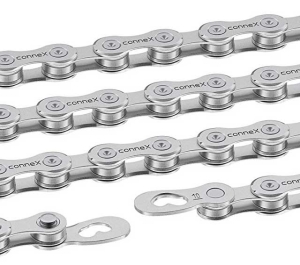I’ve been riding dirt on Time pedals for ages. Through a lucky circumstance over the transom flew the new Time ATAC XC12 Ti/Carbon. Hooray for me, since I and most of us are rotating onto gravel bikes as our most likely choice when not on a tri bike.
Foot-to-shoe-to-pedal is a primary contact point most of us take for granted. I don’t take it for granted. As you solve your saddle and aerobar problems, dial in your bike position, you may eventually get to pedals, and you may end up as picky about yours as I am about mine. Here’s how I found these new Time ATACs.

If presentation matters then Time wins big with this “cookie tin” that opens to reveal its elegant pedals safely ensconced in a block of foam. That’s nice, and I’ll keep this tin in my shop. If I die an untimely death my wife could do worse than throwing my ashes inside of this.
Weight either matters a little or it matters a lot. I make my living as an endurance coach and bike fitter, and I remind new athletes buying their first bike that a heavy bike helps them to go downhill.

A heavy bike is the same as a light bike at speed on the flats. The only place a heavy bike hurts is going uphill. I’m not a slave to the scale but if we’re gonna go to the mattresses over weight then the conventional wisdom is that it’s rotating weight that matters: shoes/cleat/pedals. These come in at a lean 249gms for the pair.
You can see the progression when compared to an earlier version of the carbon ATAC at 342gms (off my mountain bike) and the vintage Time ATAC pedals at 409gms that were on my gravel bike.

There’s float in them thar pedals. If you like it that your pedals have float, thank Time. Float in pedals was one of Time’s gifts to the cycling world a couple of generations ago.
Time has gone to some length to offer a range of movement for several types of riders. Time makes an “Easy Cleat”, for those new to clipless systems, that requires only 10 degrees of rotation to release the rider from the pedal. The pedals I tested come with the standard cleat that can be mounted right cleat on right shoe (and left on left) with a resulting 13 degrees of rotation to release. They can also be reversed (left on right & right on left) for 17 degrees of rotation.
This is all up to rider preference, but for an example of extremes: a downhiller who is using lots of body English might want that 17-degree set up while a gravel rider who’s driving the bike mainly straight ahead might prefer the 13 degree position.

There is an element to the ATAC pedal that is unique and logical. While most pedals receive the cleat via the back, the Time pedal hinges at the front of the cleat. This means that the motion of clipping-in works in harmony with the foot driving the bike forward through the power phase of the pedal circle. The suggestion here is greater efficiency, especially in situations like repeated flying mounts in a cyclocross race.
I have, perhaps, buried the lede because the special duty of offroad road pedals is to work in mud. (At least I began above with my mud picture.) This is the place where the Time ATAC system might jump its competition. The entire front end of the Time ATAC pedal is open. Any mud build-up on pedal or cleat is simply pushed forward and through the space allowing for the cleat to meet the lever unobstructed. I was lucky enough to test during some rare Los Angeles rain and purposely loaded up my shoes and pedals. If the pedal doesn’t pass this test then its light weight doesn’t matter. Happy to report it was easy-in, easy-out every time.
This makes it not a bad choice for a tri pedal, by the way, if your sport has you running from a bike rack to a mount line over a muddy grass field.
Time’s ATAC line starts around $90, and a good MTB/Gravel pedal, maybe like a Shimano XTR PD-M9020 Trail Pedal, starts in that general range. If you price up a little you get into the range of the Speedplay Sizr, and to all these pedals with stainless steel (rather than chrome moly) spindles. Nice pedals, Crank Brothers Candy line, all these I’m talking about, these can range into the mid-$150s. When you start to throw in carbon and titanium, of course this pushes the price up. The Time ATAC XC12 Ti/Carbon is a $400 set of pedals. Just, before you keel over dead I’d let Google by my friend. (You may be pleasantly surprised.)
I predict you’re going to see more of Time Sport in North America. Rossignol (the ski company) made two important Summer sport purchases in recent years: Felt Bicycles and Time Sport. What was always a boutique French very high-end, very quality and tech-minded company is still all of that, but I can’t help but thinking it’s U.S footprint (Rossignol and Felt) may cause this brand to more frequenly pass across your transom too.
[Ian Murray leads Coaching Education for USA Triathlon; teaches bike fitting for two of the world’s most prestigious schools: F.I.S.T and at Guru's Fit Academy; and is a principal at Slowtwitch Coaching. He has served as the Head Coach for the United States for the Youth Olympic Games, Nanjing 2014, ITU WTS Madrid, ITU World Cups, Duathlon World Championships, CAMTRI Championships and more. He is a USAT L3, ITU L2, USAC L2 coach, and was named the Development Coach of the Year by The US Olympic Committee in 2006.]



